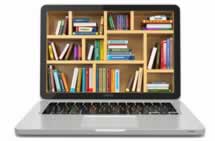Digital learning’s popularity is skyrocketing, but many myths go undisputed
 As digital learning in the classroom gains more support from educators, parents, and students, a national education group has released a toolkit that defines digital and blended learning, offering tips to help promote the benefits of a more digital-centric education.
As digital learning in the classroom gains more support from educators, parents, and students, a national education group has released a toolkit that defines digital and blended learning, offering tips to help promote the benefits of a more digital-centric education.
The Center for Education Reform’s 2014 Digital Learning Toolkit defines blended learning as “an approach that involves a myriad of delivery mechanisms via online tools for students, no matter where they live or attend school.”
The toolkit offers tips on how to debunk myths about online learning, ways to change public discourse, and how to clearly promote and express blended learning’s benefits to community leaders, the media, and policymakers.
According to the toolkit, one key tip involves using data to back up arguments in favor of digital and blended learning, because data showing real results can have a powerful impact. Another is to define objectives instead of simply asking for change—in fact, that’s the basis to all successful technology initiatives in schools: Defining an objective or goal and then determining the best path and tool to achieve desired outcomes.
(Next page: Eight myths about digital learning)
The toolkit links to additional resources for information on blended and digital learning, and suggests using social media to stay updated on the latest information and to connect with others who are discussing the topic.
Eight digital learning myths
- We can just say ‘innovation’ and look like we’re doing something. According to an October 2013 poll from the Center for Education Reform, when asked to name a promising new educational innovation, most participants simply answered “technology,” as in the use of computers and the internet. Using the word “innovation” doesn’t ignite any sparks for the average citizen. To really discuss innovation, proponents should talk about real progress and student results.
- Online learning is a short-term trend. Online learning comes in many different forms, be it an online class, webinars, blended learning programs, or virtual charter schools. According to the Center for Education Reform, “the number of students attending full-time online schools has grown from approximately 200,000 in 2009-2010 to 310,000 in 2012-2013.” Additionally, 48 of the 50 states, as well as the District of Columbia, are offering some form of online learning opportunities.
- Online learning is only for gifted students. Online learning is a great tool for any and all students, according to the toolkit. It lets students work and learn at their own pace, allowing them to spend more time on concepts that are more challenging to them. It also is a great tool for students who don’t have as many schooling options available to them, such as those who live in rural or inner city areas or those with special needs.
- Online learning is only available to families with computers. Schools that offer blended and digital learning provide students with computers and other tools they may need to participate. They often open media centers during non-school hours.
- Online learning is cheaper. Though there’s no physical classroom to go to, online learning still requires a great deal of funding. Online learning institutions need computers, technology programs, teachers, and various other employees to keep the programs running, and because online learning is still somewhat controversial, it does not always receive the funding it requires, which can drive up the price of classes.
- Online learning has no real accountability. Virtual schools are held to state and federal standards, as are the institutions’ teachers. Students participating in online classes are expected to attend, participate, and take tests just like students who sit in a physical classroom.
- Online learning isn’t getting positive results. According to the Center for Education Reform, the best way to measure the success of digital learning is by measuring growth in academic performance. Though digital learning programs have created their own assessments that do show progress, there are currently no state programs to measure this growth.
- Online students have no social interaction. Students who take online classes get the same or more individual time with teachers and the other students as they would in a physical classroom. Virtual classrooms also give shy students a platform to participate where they may be uncomfortable to do so in person. Most classes are only part-time, so students take a couple classes online and the rest in a traditional school setting, allowing them to experience the best of both worlds.
Sydney Mineer is an eSchool News editorial intern.
- 4 ways to encourage play in education - April 25, 2024
- CoSN IT Leader Spotlight: Lisa Higgins - April 25, 2024
- It’s time to pay student teachers - April 25, 2024

Comments are closed.